Beans
Beans are a nutritious, filling fiber source—low in calories and high in satisfaction. They are a complex carbohydrate (or good carb) that will actually help balance glucose (blood sugar) levels. Beans are inexpensive and easy to cook, and the variety of ways to prepare them is endless. They have a reputation for causing gas, but the best way to acclimate your digestive system to handle beans is to eat them frequently, allowing the needed enzymes to establish themselves in your gut. People who eat beans several times a week do not usually have the stereotypical gas-passing problems. Try to eat at least one cup of beans each day.
Pinto beansPinto Beans are the most common and recognizable bean to Americans. They are commonly used in Mexican dishes and western chili, but can be seasoned to fit a wide variety of dishes. After cooking thoroughly, pintos may be mashed or partially blended to make bean dips or healthy refried beans (no lard needed!). Our favorite seasonings for pinto beans are cumin, garlic powder, taco seasoning (without MSG), jalapeños, and more cumin. Some folks like them just as well plain.
Great northern beansGreat Northern Beans are used for white chili, baked beans, ham and beans, and beans & weenies. They have a great flavor of their own but will take the style of whatever seasonings you add. We love these cooked with onions and served with cornbread.
Kidney beansKidney Beans are another popular choice for western chili. They may be drained, rinsed, and added to multi-bean salads or just sprinkled on top of a tossed salad for variety. Kidney beans tend to take a little longer to cook than other beans, particularly in the pressure cooker. Allow an extra few minutes.
Small red beansSmall Red Beans are also good in chili and soups. Because they take less time to cook and are less expensive than kidney beans, we often use them as a kidney bean substitute.
Black beansBlack Beans (or frijoles negros) are a tasty alternative to pinto beans. Use them in the same way you would use pintos in your Mexican recipes. Be aware that virtually any food you add to them will take on their purple-black color, which is beautiful on the beans but can look a bit peculiar when it stains corn or carrots. Reserve these and mix together just before serving for a more visually-appealing dish.
SoybeansSoybeans are a great source of controversy. They have been eaten for thousands of years, particularly in Asian cultures and some people promote them as having helpful estrogen properties. Others say these plant estrogens are dangerous. (Some of the studies cited include experiments where birds were fed an exclusive soy diet and had serious health problems. A diet limited to one item of any kind is likely to hinder health no matter what it is!) To play it safe, some people are saying one serving of soy a day is a reasonable amount. Preferably, this would be in the form of homemade soy burgers, soymilk, or other minimally processed soy foods such as tofu and tempeh, rather than commercially processed foods that just use soy as a filler. It is also important to note whether the soy you consume is from a genetically modified source.
Garbanzo beans/chickpeasGarbanzo Beans (or chickpeas) take a little extra time to cook when using the stove-top method. Garbanzo beans are wonderful on salads, blended into homemade hummus, made into bean burgers, or in soups. Make a Dijon sauce, add garbanzo beans, and serve over rice for Chickpea Dijon instead of Chicken Dijon. Garbanzos are great in the crock pot with some garlic powder, dried onion, and Italian seasoning. They are a rich bean producing a slightly fatty broth that is also delicious.
Black-eyed peasBlack-Eyed Peas are a Southern tradition, often seasoned with onion and bacon or a ham bone. Add a dash of hot sauce and serve with cornbread. The great thing about black-eyed peas is that they are a fast food when it comes to beans. They donít take long to cook—approximately 30 minutes in the pressure cooker.
Green/brown lentilsGreen/Brown Lentils are another quick meal on the stovetop. Lentils come in many different colors, red, black, yellow, and brown (but called green). They are commonly used in Indian dishes and called dahl. The green/brown lentils are most common in America. We cook ours with some onion, garlic powder, Italian seasoning, and diced tomato, and throw in a handful of elbow macaroni noodles toward the end. Lentils do not need presoaking and will cook in about 30 minutes.How to Cook BeansThere are several easy ways to cook dry beans. Regardless of which method you use, take a few minutes to sort them first, looking for shriveled or discolored beans, small rocks, and dirt clods; then rinse them in a colander.
Making Sure Your Beans Are Cooked ThoroughlyAlways make sure beans are thoroughly cooked. If not, they wonít kill you, but they may make you wish you were dead. Here are some tips to help ensure your beans are cooked.
Salting BeansSalting the finished beans will be necessary to make them palatable even for those on salt-restricted diets. We recommend ½ tsp. salt for every cup of pre-cooked dried beans. For example, cook one cup of beans in 2½ cups of water, and add ½ tsp. salt when done. |

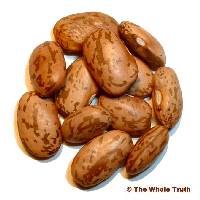
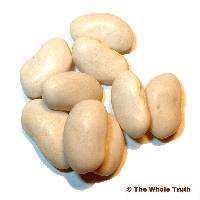
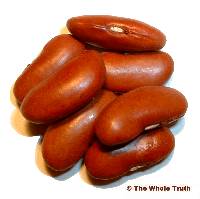
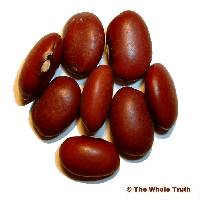
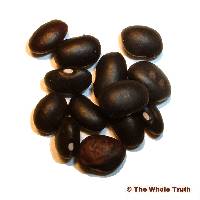
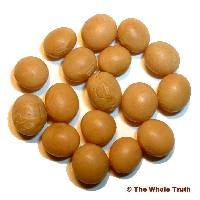
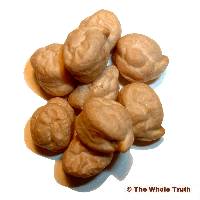
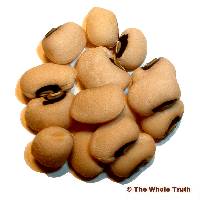
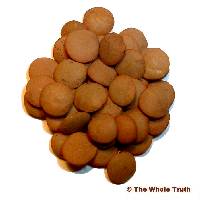
 Send page to a friend
Send page to a friend
 Add page to favorites
Add page to favorites Bookmark us
Bookmark us


